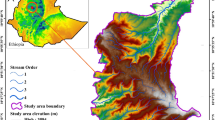Abstract
The study of drilling and blasting processes in excavation projects, especially in Iran, demonstrates various challenges and problems that eventually affect the technical and economic aspects of project performance. This paper introduces a methodology based on a computer-based fuzzy cognitive map approach to find and prioritize the problematic drilling and blasting factors in tunneling projects in Iran. A particular cognitive map of the problem was designed by use of 34 problematic factors that selected by tunneling engineers in Iran. In the designed map, the weights of the problematic factors and their interactions were considered on the basis of the opinions of engineers. The designed map was finally solved by considering the causes and effects of the problematic factors. Results indicated that the most critical factors were respectively identified as the disregard for geomechanical changes, the lack of accurate drilling supervision and management, and the insufficient knowledge of blasting teams.





Similar content being viewed by others
References
Murthy VMSR., Dey K, Raitani R (2003) Prediction of over break in underground tunnel blasting a case study. J Can Tunn:109–115
Rodriguez R, Torano J, Mene´ndez M (2007) Prediction of the airblast wave effects near a tunnel advanced by drilling and blasting. Tunn Undergr Space Technol 22:241–251
Wei XY, Zhao ZY, Gu J (2009) Numerical simulations of rock mass damage induced by underground explosion. Int J Rock Mech Min Sci 46:1206–1213
Rodriguez R, Lombardía C, Torno S (2010) Prediction of the air wave due to blasting inside tunnels: Approximation to a ‘phonometric curve’. Tunn Undergr Space Technol 25:483–489
Haibo L, Xiang X, Jianchun L, Jian Z, Bo L, Yaqun L (2011) Rock damage control in bedrock blasting excavation for a nuclear power plant. Int J Rock Mech Min Sci 48:210–218
Barton N (2012) Reducing risk in long deep tunnels by using TBM and drill-and-blast methods in the same project–the hybrid solution. J Rock Mech Geotech Eng 4(2):115–126
Dey K, Murthy VMSR. (2012) Prediction of blast-induced overbreak from uncontrolled burn-cut blasting in tunnels driven through medium rock class. Tunn Undergr Space Technol 28:49–56
Xia X, Li HB, Li JC, Liu B, Yu C (2013) A case study on rock damage prediction and control method for underground tunnels subjected to adjacent excavation blasting. Tunn Undergr Space Technol 35:1–7
Cardu M, Seccatore J (2016) Quantifying the difficulty of tunnelling by drilling and blasting. Tunn Undergr Space Technol 60:178–182
Cheng M, Prayogo D (2017) A novel fuzzy adaptive teaching–learning‑based optimization (FATLBO) for solving structural optimization problems. Eng Comput 33(1):55–69
Hasanipanah M, Bagheri Golzar S, Abbasi Larki I, Yazdanpanah Maryaki M, · Ghahremanians T (2017) Estimation of blast-induced ground vibration through a soft computing framework. Eng Comput 33(4):951–959
Mottahedi A, Sereshki F, Ataei M (2017) Development of overbreak prediction models in drill and blast tunneling using soft computing methods. Eng Comput. https://doi.org/10.1007/s00366-017-0520-3
Shirani Faradonbeh R, Monjezi M, Jahed Armaghani D (2015) Genetic programing and non-linear multiple regression techniques to predict backbreak in blasting operation. Eng Comput 32(1):123–133
Bakhtavar E, Khoshrou H, Badroddin M (2015) Using dimensional-regression analysis to predict the mean particle size of fragmentation by blasting at the Sungun copper mine. Arab J Geosci 8:2111–2120
Hasanipanah M, Jahed Armaghani D, Monjezi M, Shams S (2016) Risk assessment and prediction of rock fragmentation produced by blasting operation: a rock engineering system. Environ Earth Sci 75:808–819
Taheri K, Hasanipanah M, Bagheri Golzar S, Abd Majid MZ (2017) A hybrid artificial bee colony algorithm-artificial neural network for forecasting the blast-produced ground vibration. Eng Comput 33(3):689–700
Hasanipanah M, Shahnazar A, Bakhshandeh Amnieh H, Jahed Armaghani D (2017) Prediction of air-overpressure caused by mine blasting using a new hybrid PSO–SVR model. Eng Comput 33(1):23–31
Amiri M, Bakhshandeh Amineh H, Hasanipanah M, Mohammad Khanli L (2016) A new combination of artificial neural network and K-nearest neighbors models to predict blast-induced ground vibration and air-overpressure. Eng Comput 32(4):631–644
Fouladgar N, Hasanipanah M, Bakhshandeh Amnieh H (2017) Application of cuckoo search algorithm to estimate peak particle velocity in mine blasting. Eng Comput 33(2):181–189
Abdollahisharif J, Bakhtavar E, Nourizadeh H (2016) Green biocompatible approach to reduce the toxic gases and dust caused by the blasting in surface mining. Environ Earth Sci 75:191–203
Bakhtavar E, Abdollahisharif J, Ahmadi M (2017) Reduction of the undesirable bench-blasting consequences with emphasis on ground vibration using a developed multi-objective stochastic programming. Int J Min Reclam Environ 31(5):333–345
Bakhtavar E, Nourizadeh H, Sahebi AA (2017) Toward predicting blast-induced flyrock: a hybrid dimensional analysis fuzzy inference system. Int J Environ Sci Technol 14:717–728
Axelrod R (1976) Structure of decision: the cognitive maps of political elites. Princeton University Press, Princeton
Kosko B (1986) Fuzzy cognitive maps. Int J Man Mach Stud 24:65–75
Rodriguez-Repiso L, Setchi R, Salmeron JL (2007) Modelling IT projects success with fuzzy cognitive maps. Expert Syst Appl 32(2):543–559
Schneider M, Shnaider E, Kandel A, Chew G (1998) Automatic construction of FCMs. Fuzzy Sets Syst 93:161–172
Acknowledgements
The authors would like to thank the experts of the tunneling companies helped us during our research.
Author information
Authors and Affiliations
Corresponding author
Rights and permissions
About this article
Cite this article
Bakhtavar, E., Shirvand, Y. Designing a fuzzy cognitive map to evaluate drilling and blasting problems of the tunneling projects in Iran. Engineering with Computers 35, 35–45 (2019). https://doi.org/10.1007/s00366-018-0581-y
Received:
Accepted:
Published:
Issue Date:
DOI: https://doi.org/10.1007/s00366-018-0581-y




